

Challenges of seamless Salesforce testing
Explore common Salesforce testing challenges and proven strategies testers can use to overcome them effectively.
By Gurumoorthy Manickam
Lead Test Engineer
Challenges for seamless Salesforce testing
Salesforce has become a potent tool in today's ever-changing digital business environment, helping companies to optimize their Customer Relationship Management (CRM) procedures. Robust testing approaches are essential as companies rely more and more on Salesforce to handle sales, marketing, and customer support tasks. To guarantee the reliability, functionality, and security of the platform, effective Salesforce testing is necessary.
But there are special difficulties while negotiating the testing landscape in the Salesforce environment. We'll go into the nuances of Salesforce testing in this blog article and highlight common challenges that businesses encounter. We'll explore the main obstacles that businesses face in their pursuit of efficient Salesforce testing, from the intricacy of customization to the always changing landscape of Salesforce updates.
Come along on this adventure as we explore the nuances of testing challenges with Salesforce and how to overcome them, enabling businesses to maximize the benefits of their Salesforce implementations.
Data Management
Data management in Salesforce testing presents various challenges due to the platform's complexity, customization capabilities, and the critical importance of maintaining data integrity.
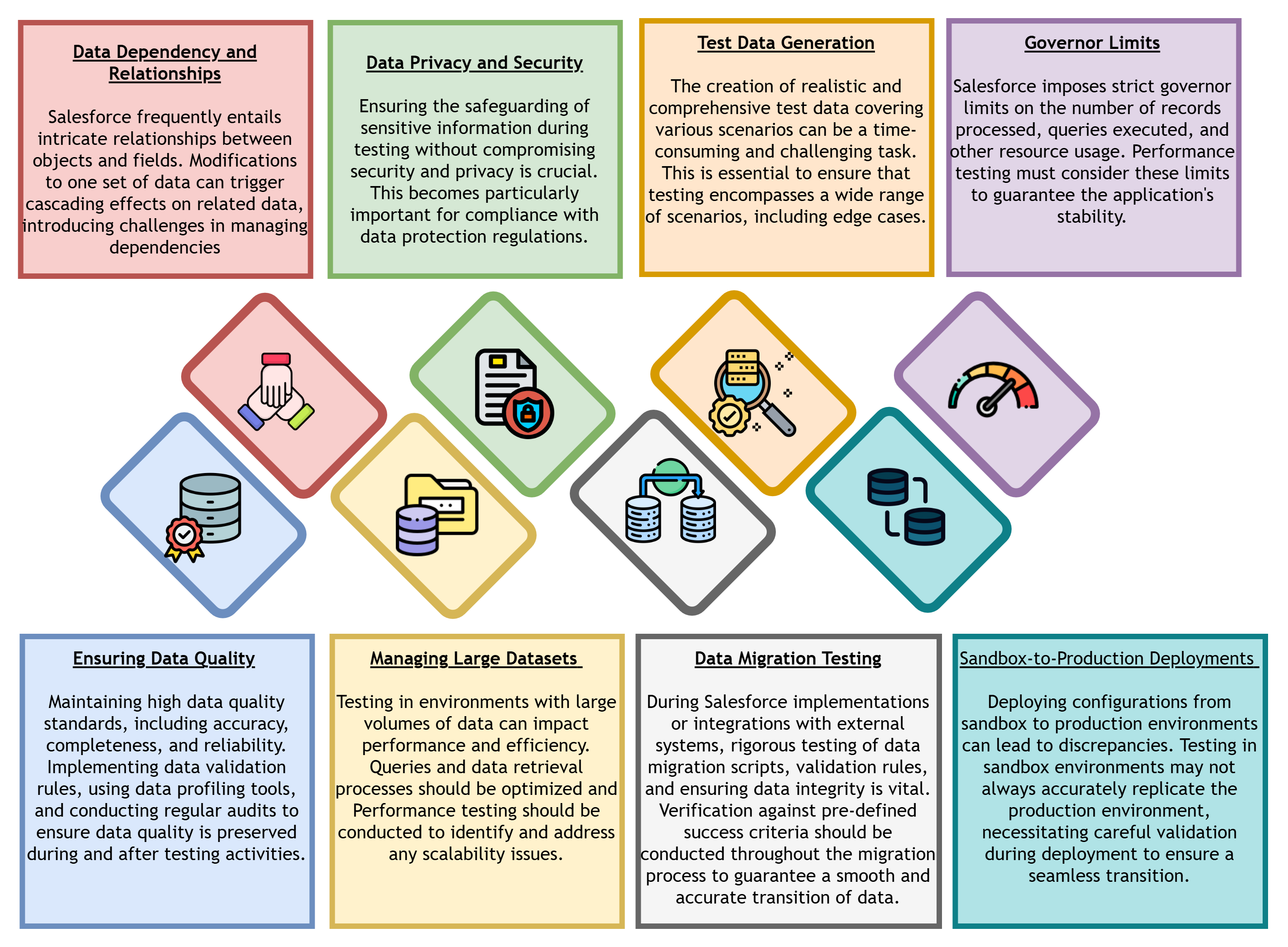
How to overcome??
In order to surmount these obstacles, it would be advisable for organization's to use a multipronged approach that includes stakeholder collaboration throughout Salesforce testing, automation, and strategic planning. Enhancing Salesforce applications' dependability and efficacy requires proactive management of data-related features.
Complexity of the platform
Because Salesforce is highly configurable, businesses may use point-and-click tools to greatly customize it. Testing these setups is difficult, though, because modifications made to one region could have repercussions in other areas.
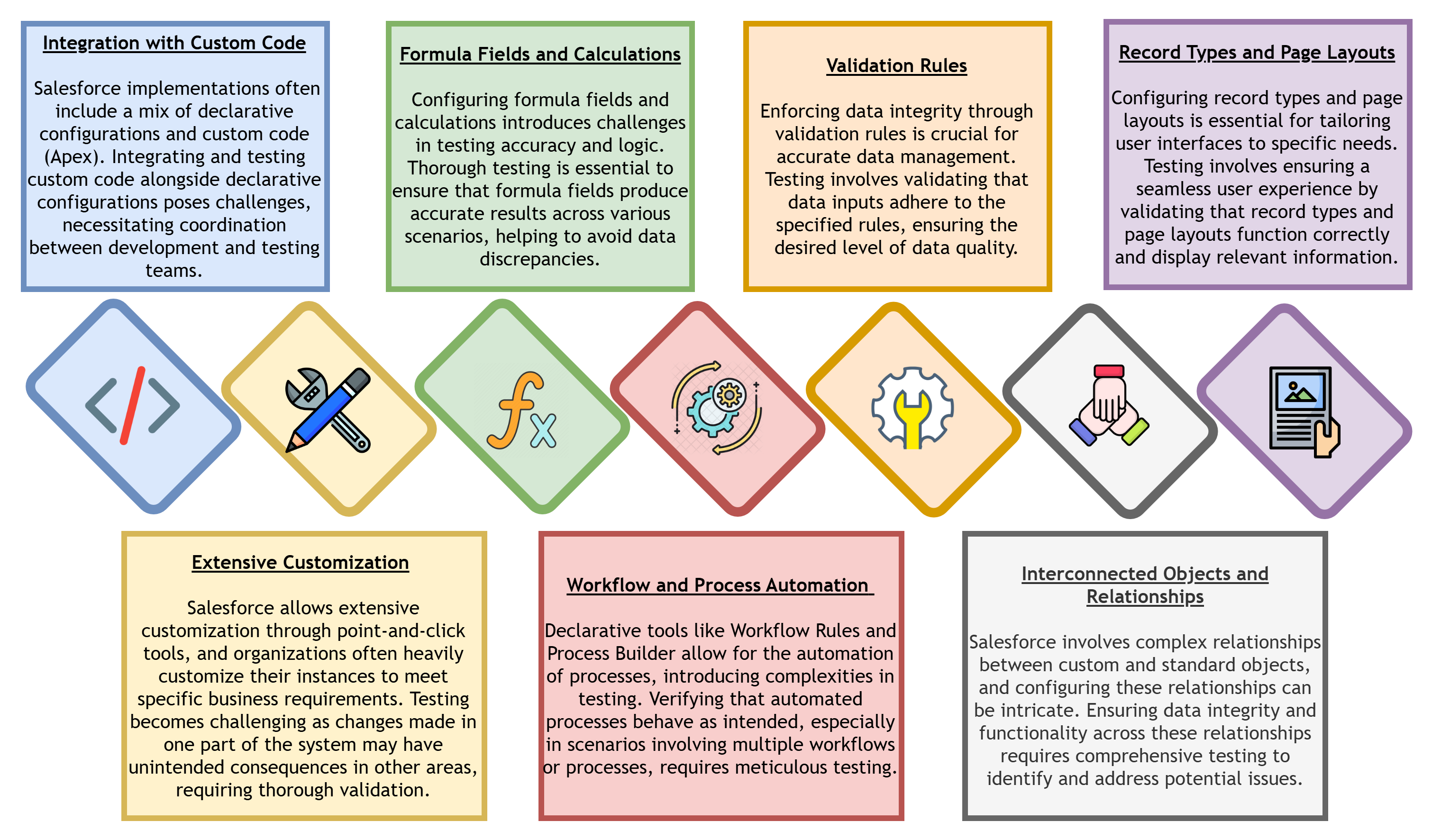
How to overcome??
Organization's should put in place a well-organized testing strategy that includes thorough test scenarios, careful data validation, and strong coordination between the development and testing teams in order to effectively address these difficulties. Testing procedures become even more efficient and repeatable with the use of automated testing tools.
Continuous Updates and Releases
Overseeing Salesforce's frequent updates and addition of new features is a constant task. Proactive testing and ongoing attention are needed to guarantee that these modifications have no impact on already-existing functionalities.
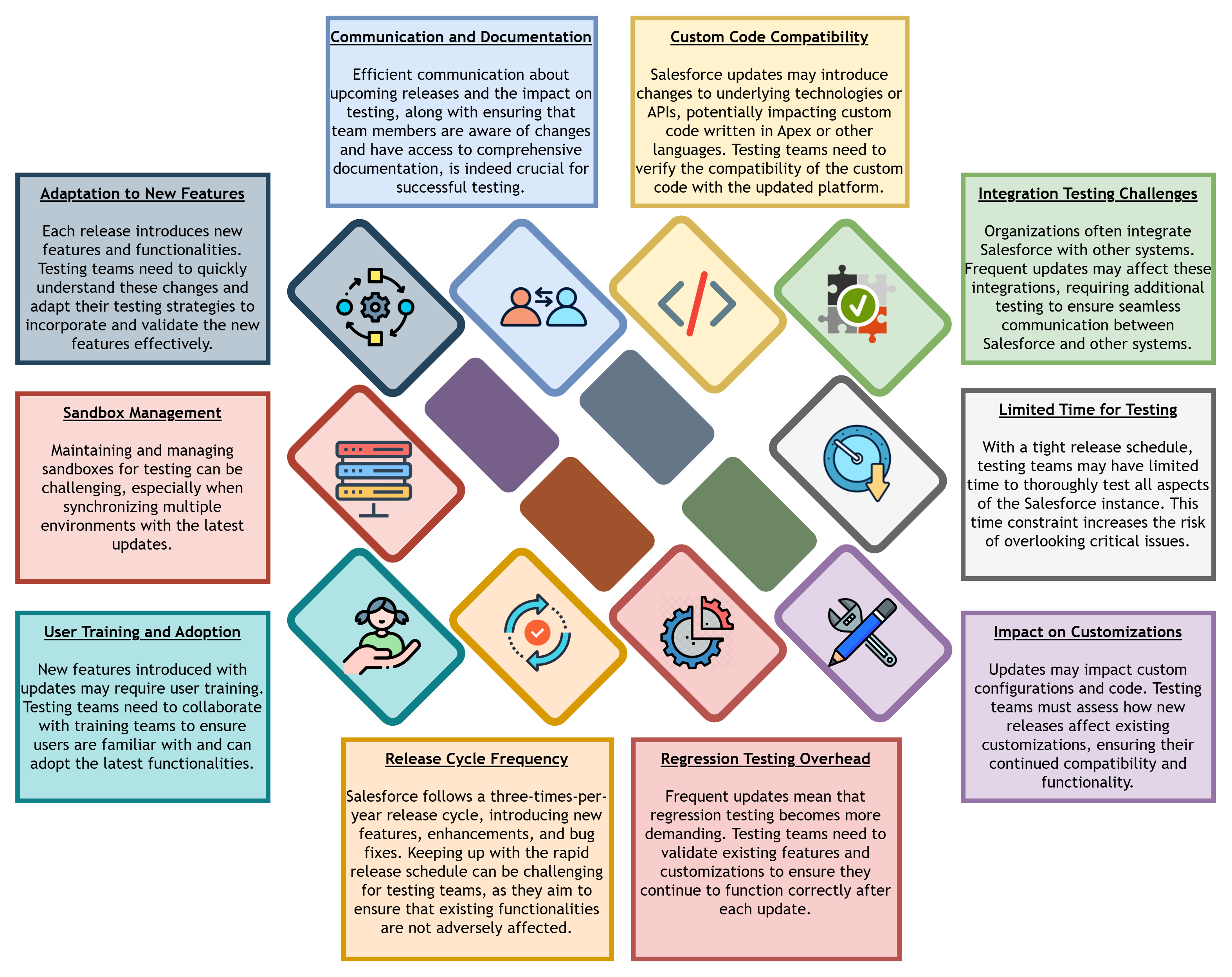
How to overcome??
Organization's can priorities important test cases, implement automated testing technologies, create strong change management procedures, and encourage cooperation between the development, testing, and business teams in order to address these issues. By taking these steps, you can ensure a seamless transition throughout Salesforce updates and expedite the testing process.
Cross-Browser Compatibility
Because Salesforce apps are frequently used on many browsers and devices, cross-browser compatibility testing is necessary to ensure a flawless user experience.
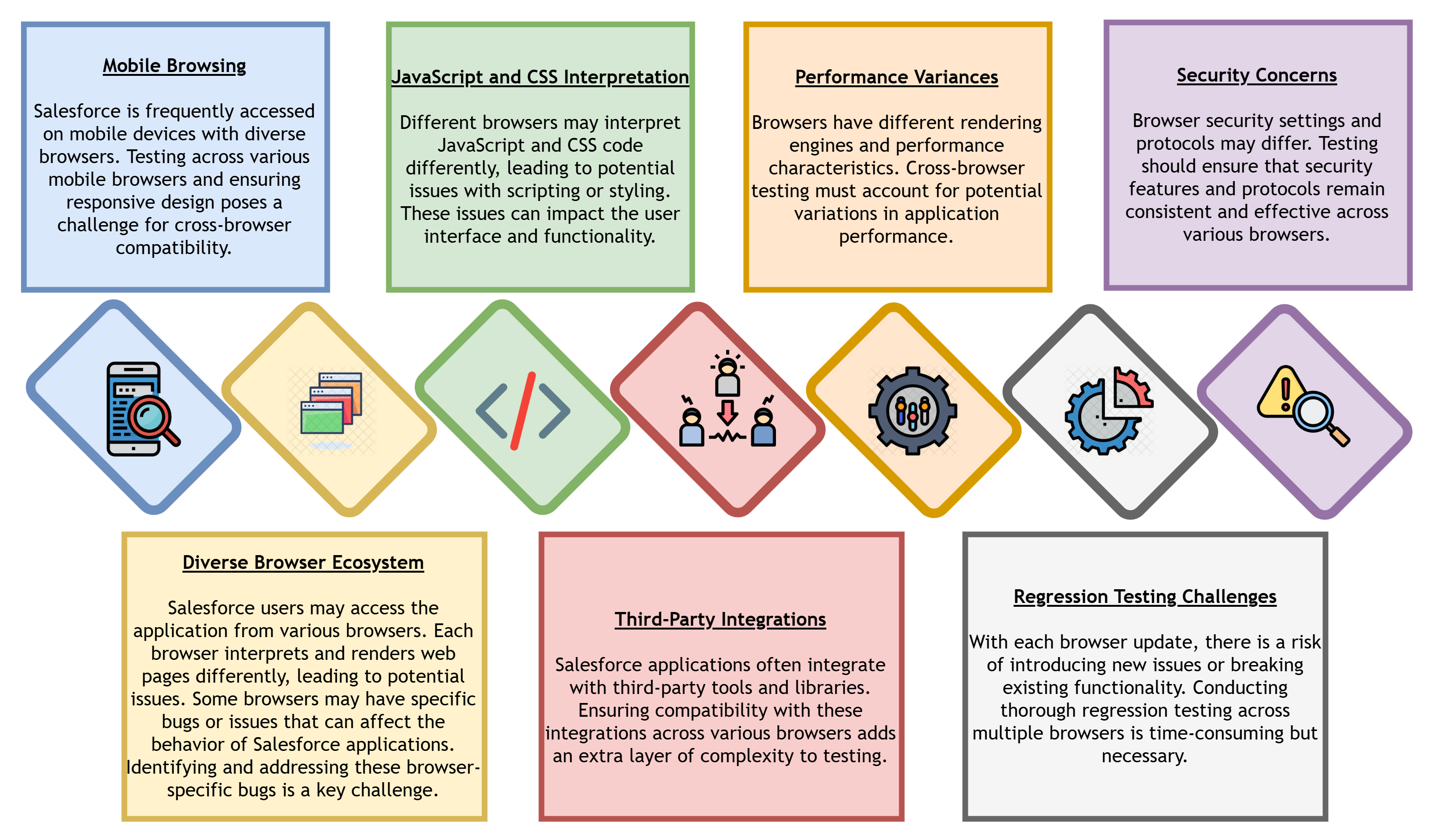
How to overcome??
To address these issues, companies can use cloud-based testing platforms, specialized browser testing tools, a methodical approach to cross-browser testing, and a current matrix of supported browser versions. Continuous testing and monitoring must be a part of the development life cycle in order to provide a dependable and consistent user experience across different browsers.
Complex Technical UI
It's typical practice to modify the Salesforce user interface to conform to certain company needs. Testing these adjustments on various browsers and devices is necessary to provide consistent user experiences.
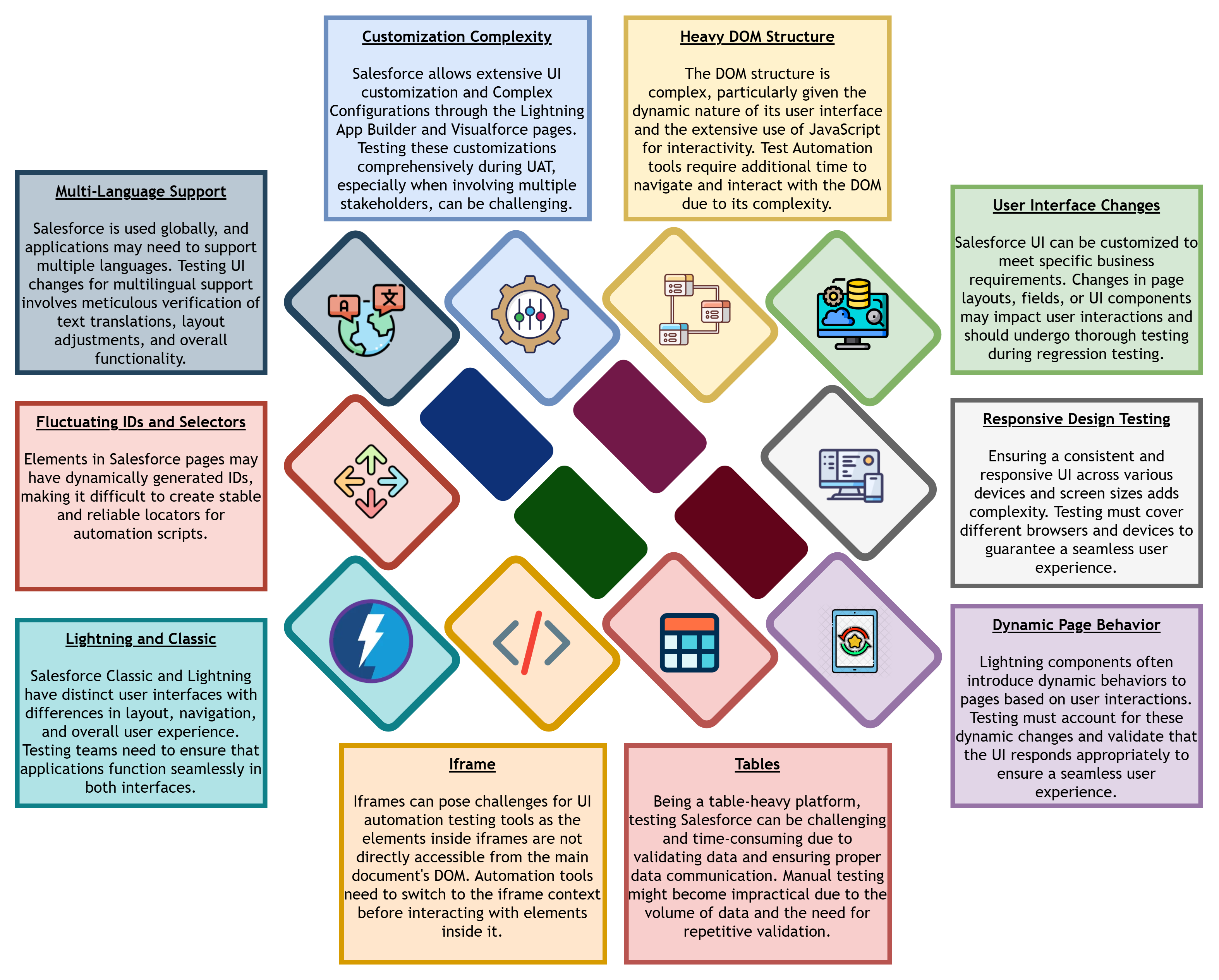
How to overcome??
A comprehensive strategy including manual testing, automated testing (particularly for regression testing), and encouraging cooperation between UI/UX designers, developers, and testing teams is required to address these issues. This guarantees a smooth and intuitive Salesforce UI customization process.
Security Testing
The security of sensitive corporate data is of utmost importance because Salesforce programmers handle this data. Assessing security flaws, access restrictions, and data encryption techniques are crucial testing components.
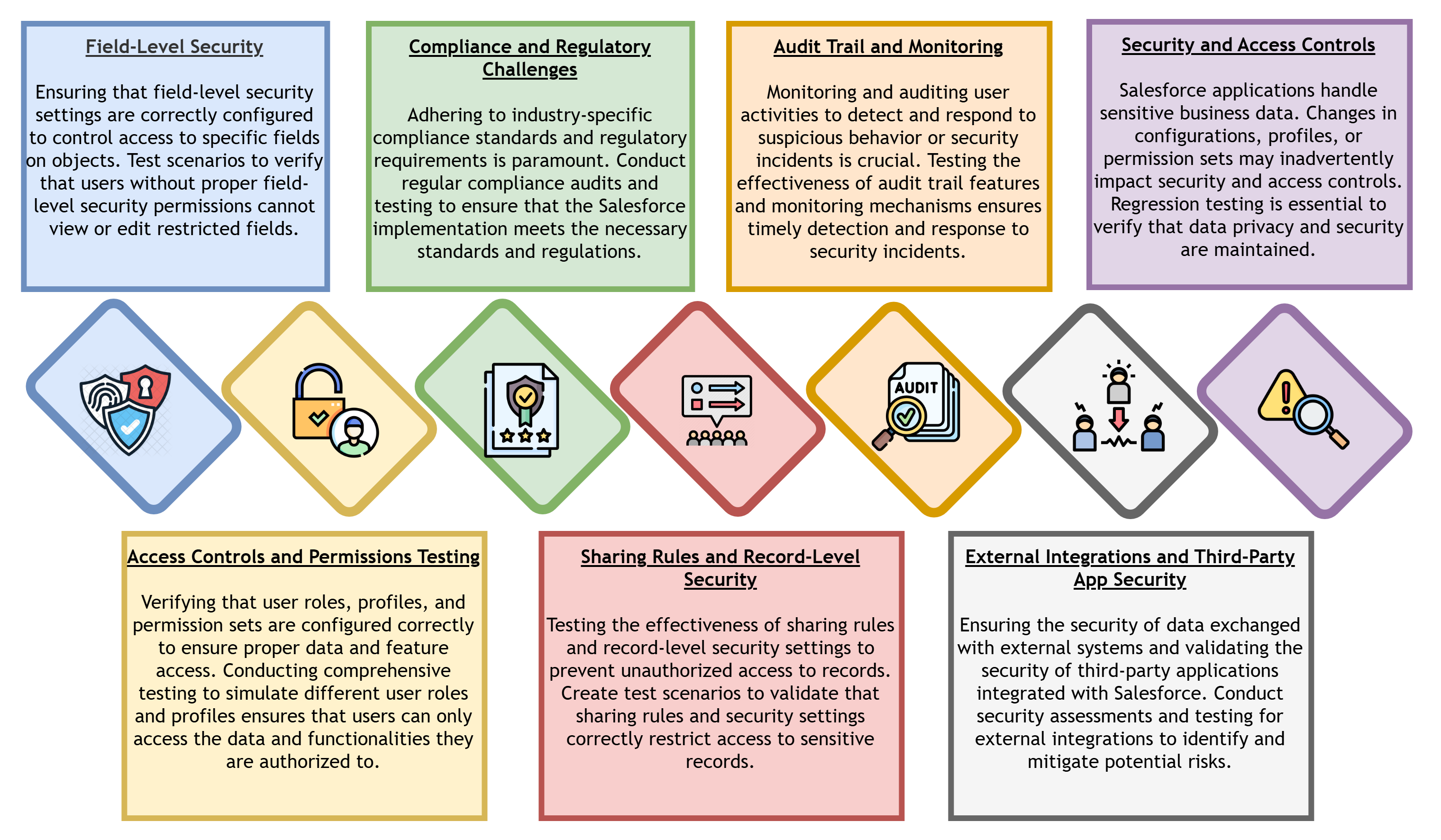
How to overcome??
In order to overcome these obstacles, thorough testing and the use of security best practices are necessary, which improves the overall security posture of Salesforce apps. A strong security testing plan must include both routine security assessments and keeping up with Salesforce's most recent security changes.
Performance Testing:
Salesforce performance testing is difficult because of the complexity of the platform, the variety of user interactions, and the significant amount of data that is involved.
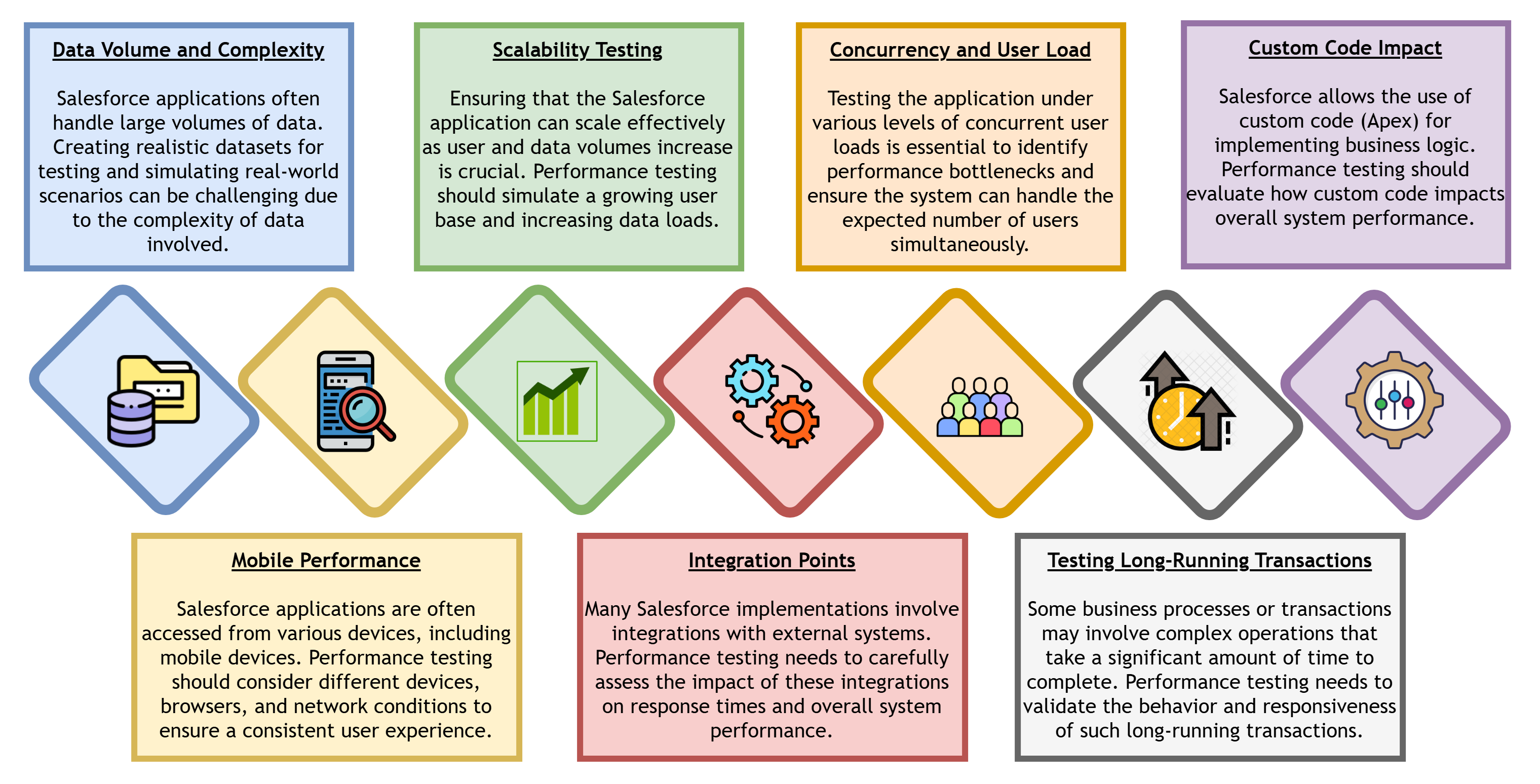
How to overcome??
Organization's require a thorough performance testing approach that includes scalability, stress, and load testing in order to overcome these obstacles. To find and fix bottlenecks, performance monitoring tools are essential. A comprehensive approach to performance testing in Salesforce is also ensured by including stakeholders from development, testing, and system administration.
Test Automation:
The intricacy of the platform, regular modifications, and the combination of declarative and programmatic components provide difficulties for the automation of Salesforce testing.
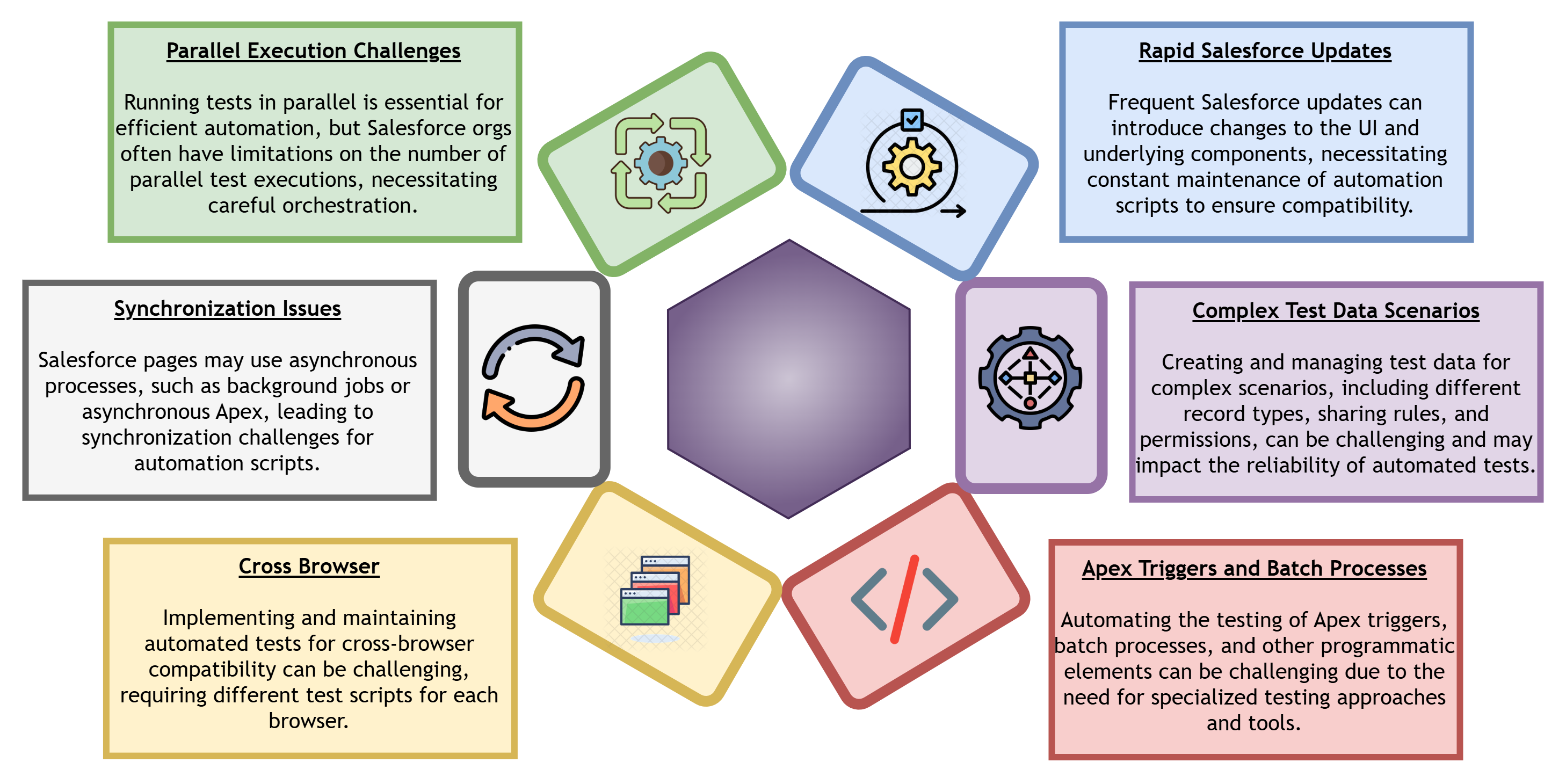
How to overcome??
Organization's should priorities making investments in strong test automation frameworks, updating scripts often to account for changes, putting in place efficient test data management techniques, and encouraging close communication between the development and testing teams in order to overcome these obstacles. Furthermore, using automated testing solutions designed specifically for Salesforce testing requirements can be advantageous.
Conclusion:
To guarantee the effectiveness and dependability of Salesforce deployment, testing is essential. We have discussed a variety of testing-related issues in this blog, from configuration complexity to the always changing landscape of Salesforce upgrades. In spite of these obstacles, organization's must proactively handle them in order to preserve user happiness, data integrity, and overall system performance.
Because there are so many configurations and integrations in Salesforce installations, testing is more difficult as organization's significantly customize them to fit particular business objectives. However, companies can effectively validate their Salesforce instances by implementing an organized testing process, such as test automation and detailed test schedules. It is recommended that companies allocate resources towards testing technologies that enable comprehensive testing and oversee the coherence of data amongst integrated platforms. A culture of continuous improvement can be promoted and problems can be lessened with regular training and communication between the testing and development teams.
In summary, even if Salesforce testing has its share of difficulties, businesses may get over them by using automation, strategic planning, and encouraging cooperation between cross-functional teams. By taking on these obstacles head-on, businesses can guarantee the success, scalability, and dependability of their Salesforce deployments, thereby optimizing the value gained from this potent platform.